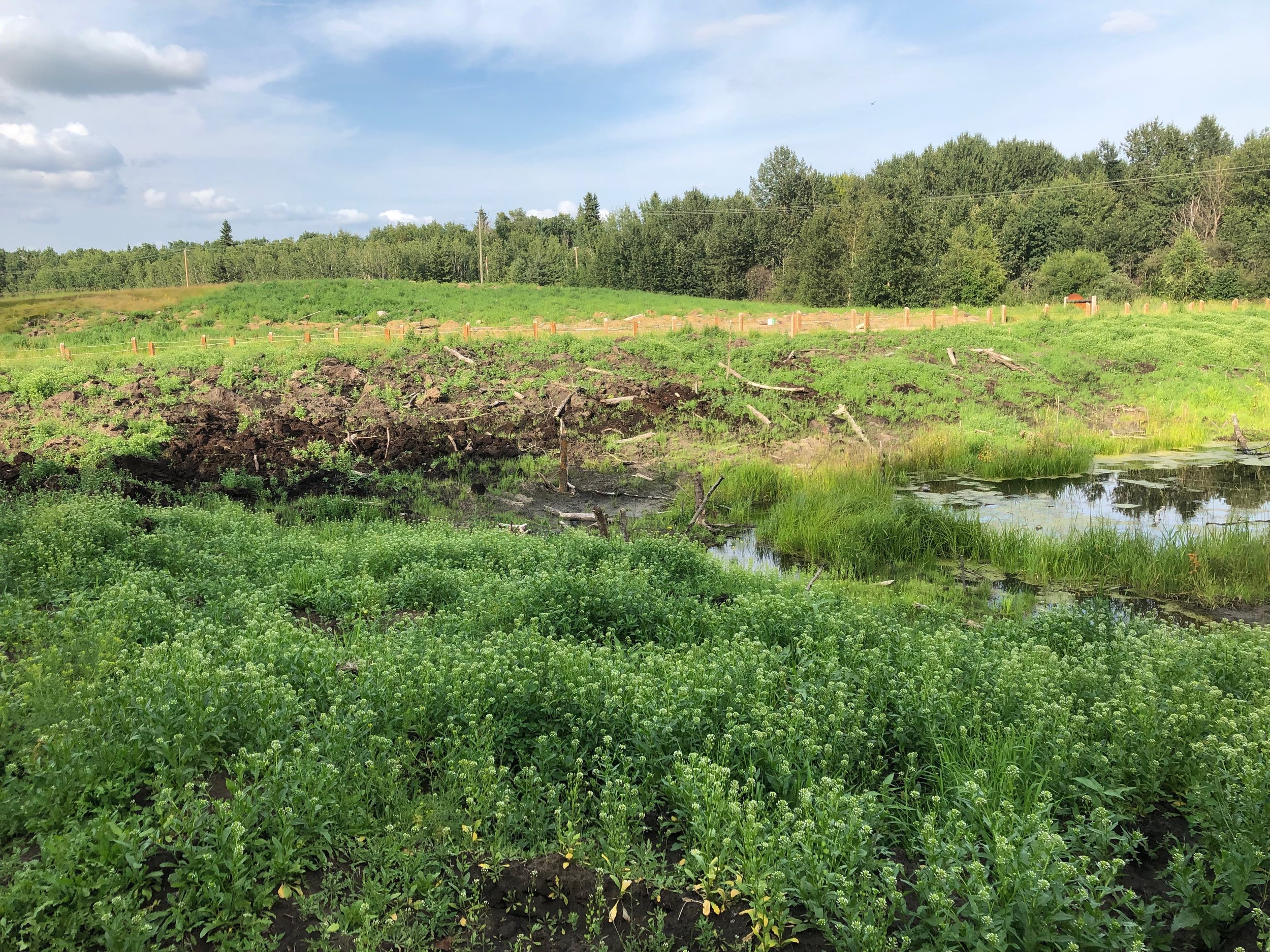Restoration in progress… What does that mean?
In 2018, the Nature Conservancy of Canada (NCC) and Edmonton and Area Land Trust (EALT) opened the Bunchberry Meadows property for the public to enjoy. In the months leading up to the opening, a parking lot, access road, picnic area, and bathrooms were constructed on a part of the site that previously housed cattle corrals. During the construction of these amenities, some of the areas around the parking lot were further disturbed and left with compacted, bare soil. Now that the property is open, we are beginning to focus on the restoration of those disturbed areas.
NCC and EALT are currently working with restoration experts and other local partners to develop a restoration plan for the disturbed areas. Our goal with the restoration project is to bring back the forest complex was that originally there and create diverse habitat around the parking lot, similar to the rest of the Bunchberry Meadows site.
Restoration science demonstrates that the most effective way to encourage plants to move into an area is to create habitat for them. Based on this principle, the mounds you see were created in the soil to reduce the compaction and provide better conditions for tree and shrub growth. The variable surface of the mounds creates different habitat types and supports species diversity. These mounds will settle over time and become covered in vegetation. Planting trees and encouraging tree seedlings on the site will also help shade out the weeds that are trying to move in and prevent desirable species from thriving.
Soil mounds created as part of a “rough and loose” reclamation technique
Once the mounds were created, NCC and EALT, working with our partners, planted 300 pine tree seedlings north of the access road and are currently working to plant additional species throughout the restoration area.
We worked with the University of Alberta to conduct a wetland restoration project and enhance the existing dugout on the property. The work done here resulted in a better shoreline with reduced slopes, shallow bays and peninsulas, and is on its way to establishing a wetland community and creating wildlife and pollinator habitat. Willows, sedges, grasses and other wetland species were planted along the shoreline already and additional plantings are planned for fall 2019. Edmonton Native Plant Society volunteers have planted native wildflowers throughout the site as well.
Upright logs mimic natural snags
Lastly, the logs you see scattered throughout the mounds are serving a purpose! Placing logs like that mimics natural downed woody debris and will help to reduce erosion and runoff, provide nutrients to the sandy soil while they decompose, and provide areas for birds to perch. Birds can play an important role in restoration, if they have places to perch, they will often leave a deposit behind. Bird poop can be a good source of native plant seeds for the site! The upright logs in the wetland area mimic standing dead trees or “snags” which are very important wildlife habitat trees in a natural forest setting.
The dugout was reclaimed to become a more natural wetland, complete with riparian vegetation like sedges and willows
Over time, the restoration of these areas will enhance the habitat available around the parking lot area and provide a visually appealing entrance into Bunchberry Meadows. Weedy species will continue to be managed and additional plantings will take place over the next several years.
We hope you enjoy visiting this amazing property! Please contact us if you have additional questions about the restoration process.
Blog post written by Katelyn Ceh from the Nature Conservancy.





